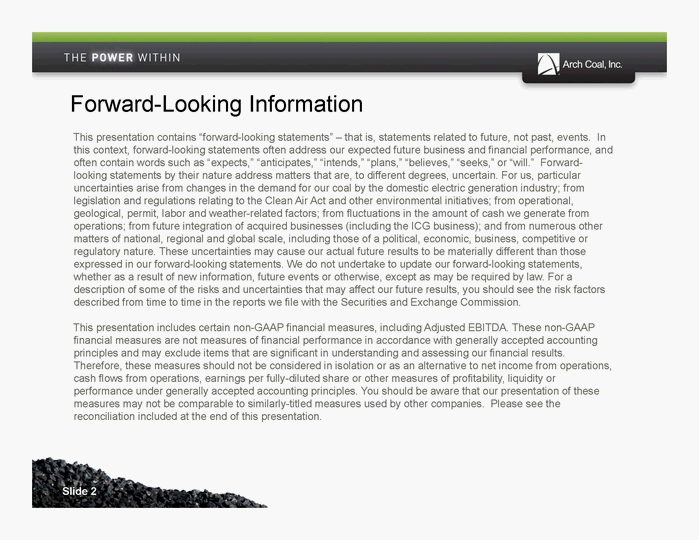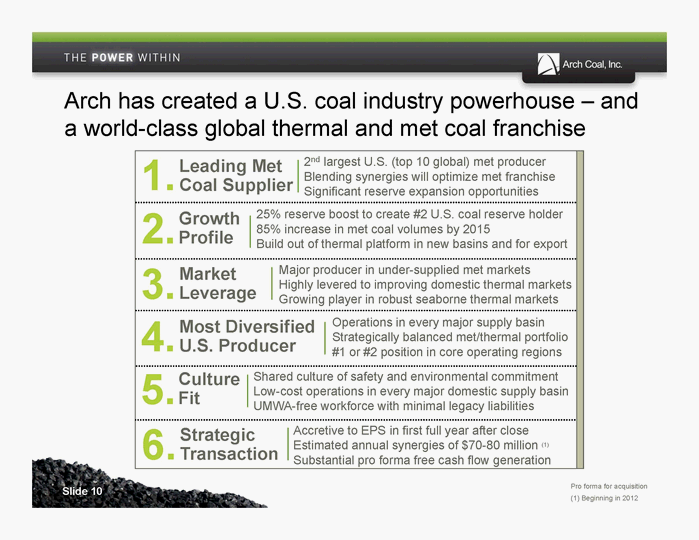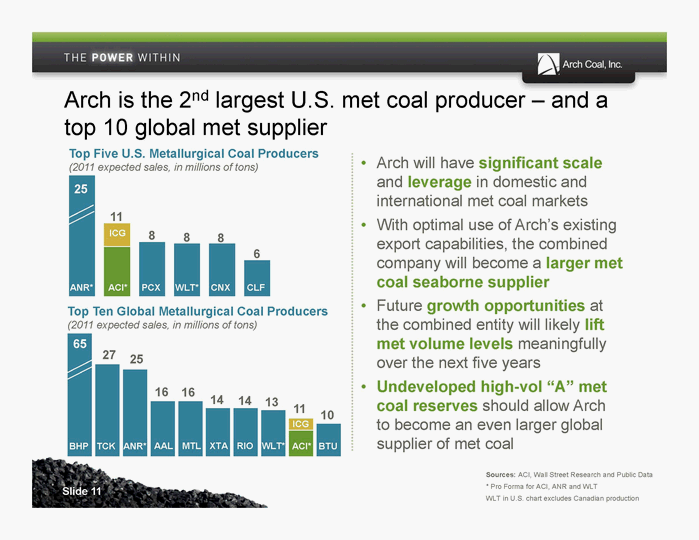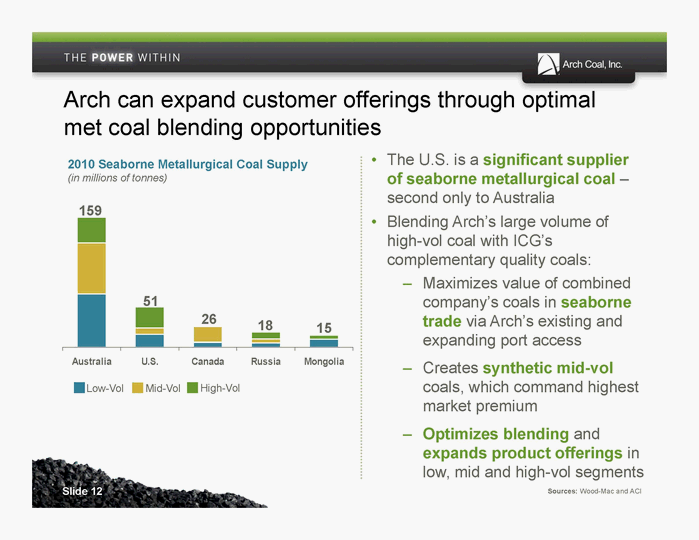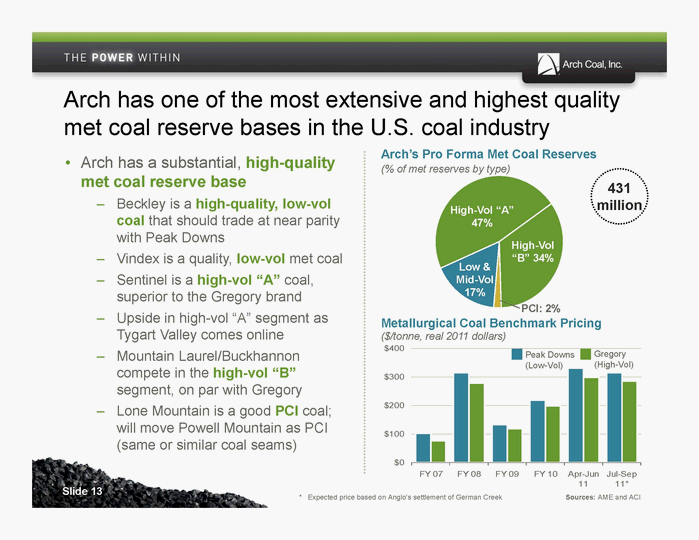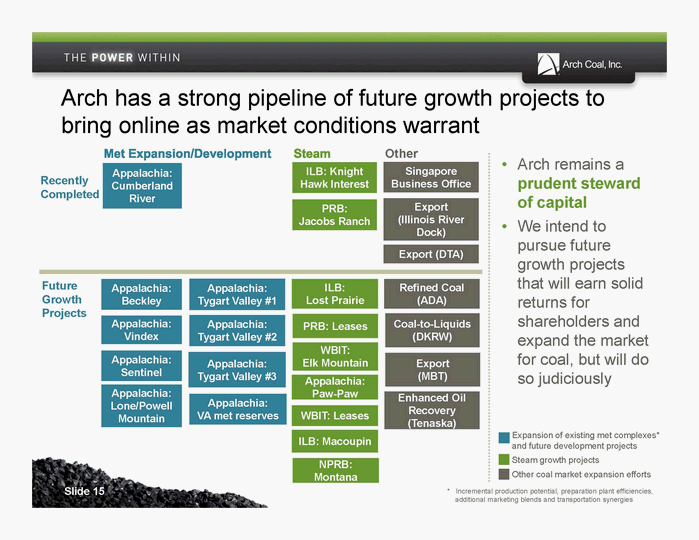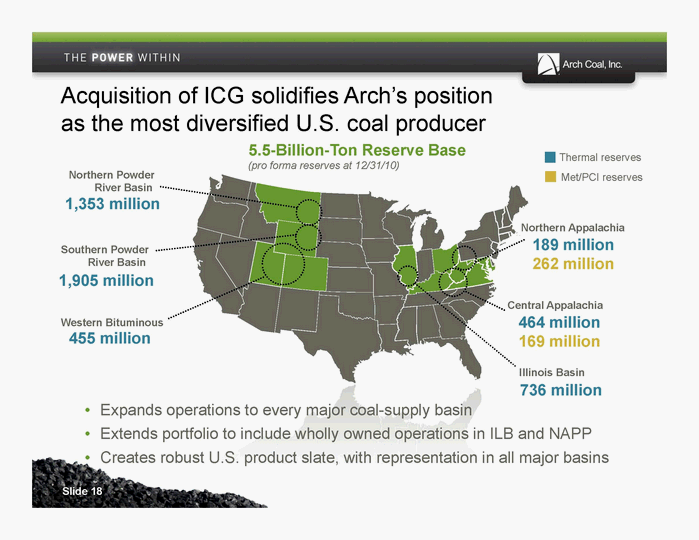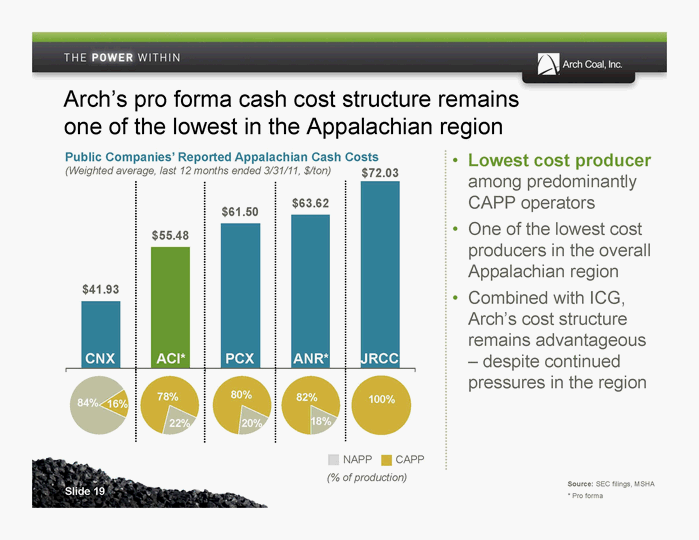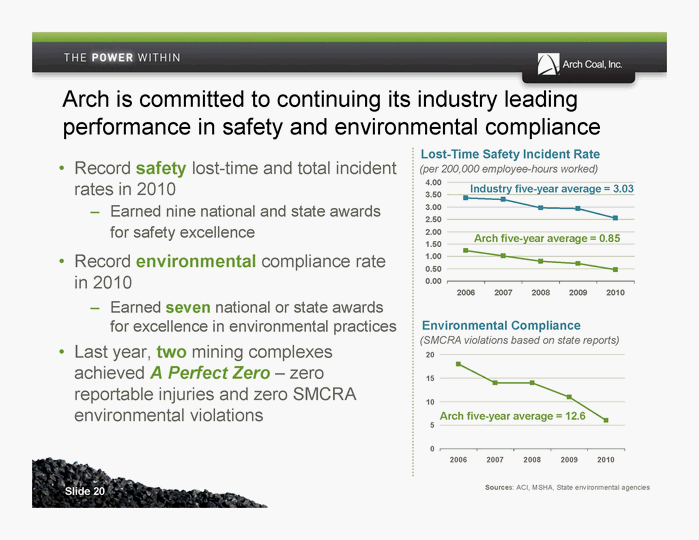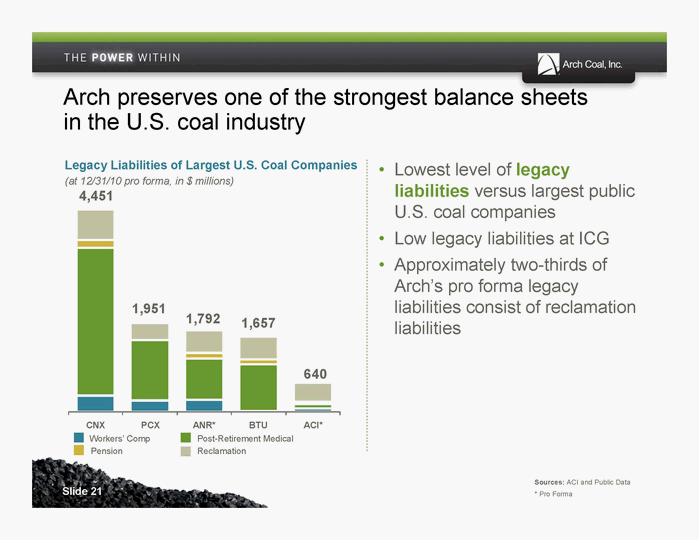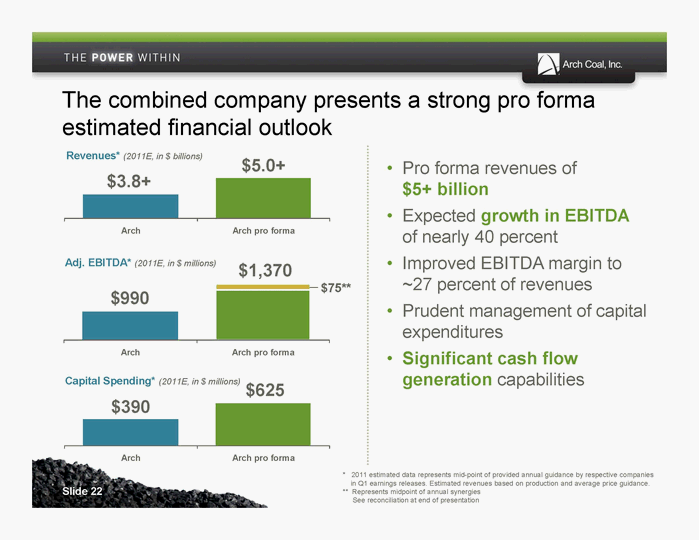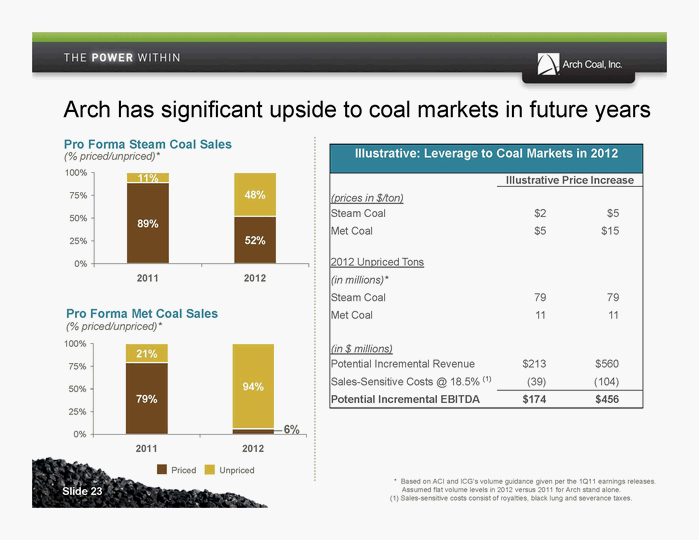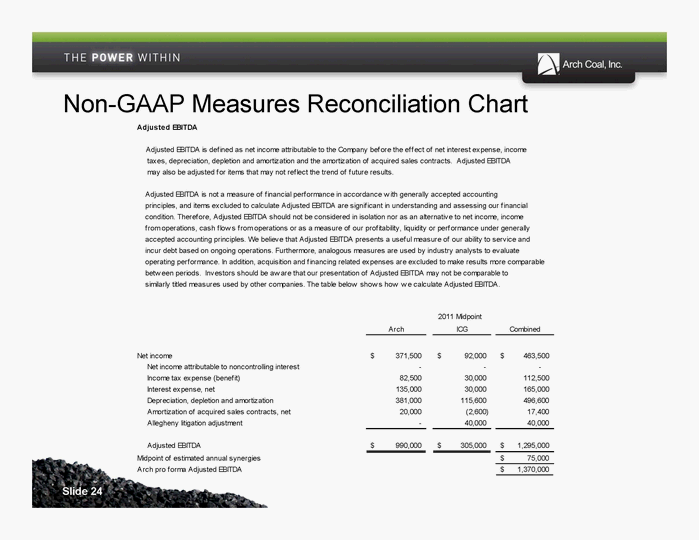| Slide 24 Non-GAAP Measures Reconciliation Chart Adjusted EBITDA Adjusted EBITDA is defined as net income attributable to the Company before the effect of net interest expense, income taxes, depreciation, depletion and amortization and the amortization of acquired sales contracts. Adjusted EBITDA may also be adjusted for items that may not reflect the trend of future results. Adjusted EBITDA is not a measure of financial performance in accordance w ith generally accepted accounting principles, and items excluded to calculate Adjusted EBITDA are significant in understanding and assessing our financial condition. Therefore, Adjusted EBITDA should not be considered in isolation nor as an alternative to net income, income from operations, cash flow s from operations or as a measure of our profitability, liquidity or performance under generally accepted accounting principles. We believe that Adjusted EBITDA presents a useful measure of our ability to service and incur debt based on ongoing operations. Furthermore, analogous measures are used by industry analysts to evaluate operating performance. In addition, acquisition and financing related expenses are excluded to make results more comparable betw een periods. Investors should be aw are that our presentation of Adjusted EBITDA may not be comparable to similarly titled measures used by other companies. The table below show s how w e calculate Adjusted EBITDA. Arch ICG Combined Net income $371,500 $92,000 $463,500 Net income attributable to noncontrolling interest — - - Income tax expense (benefit) 82,500 30,000 112,500 Interest expense, net 135,000 30,000 165,000 Depreciation, depletion and amortization 381,000 115,600 496,600 Amortization of acquired sales contracts, net 20,000 (2,600) 17,400 Allegheny litigation adjustment — 40,000 40,000 Adjusted EBITDA $990,000 $305,000 $1,295,000 Midpoint of estimated annual synergies $75,000 Arch pro forma Adjusted EBITDA $1,370,000 2011 Midpoint |

